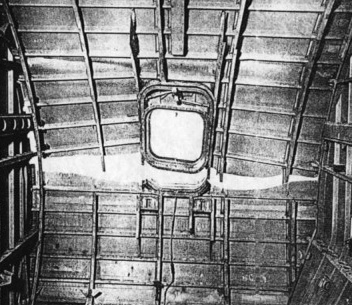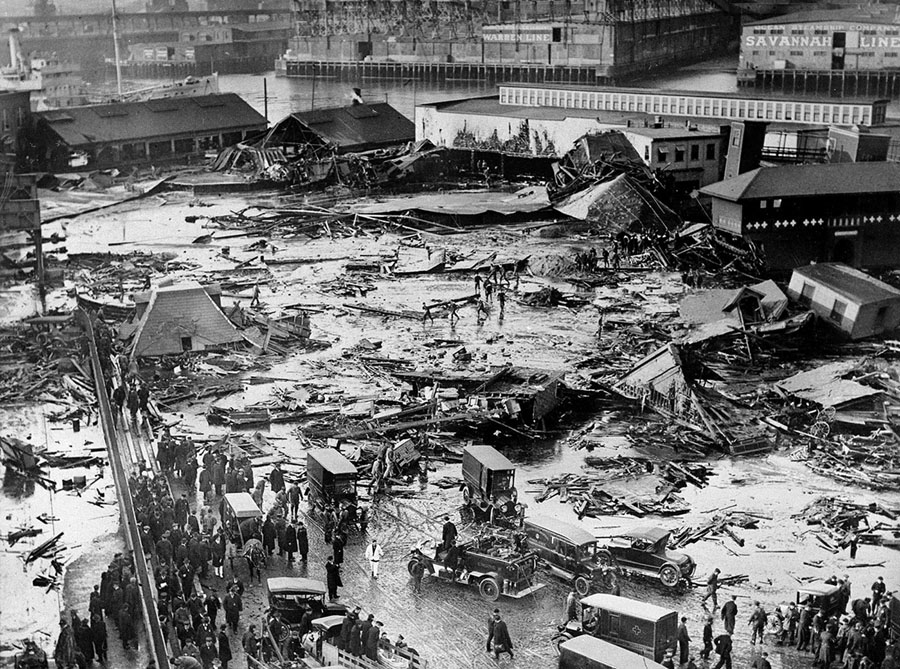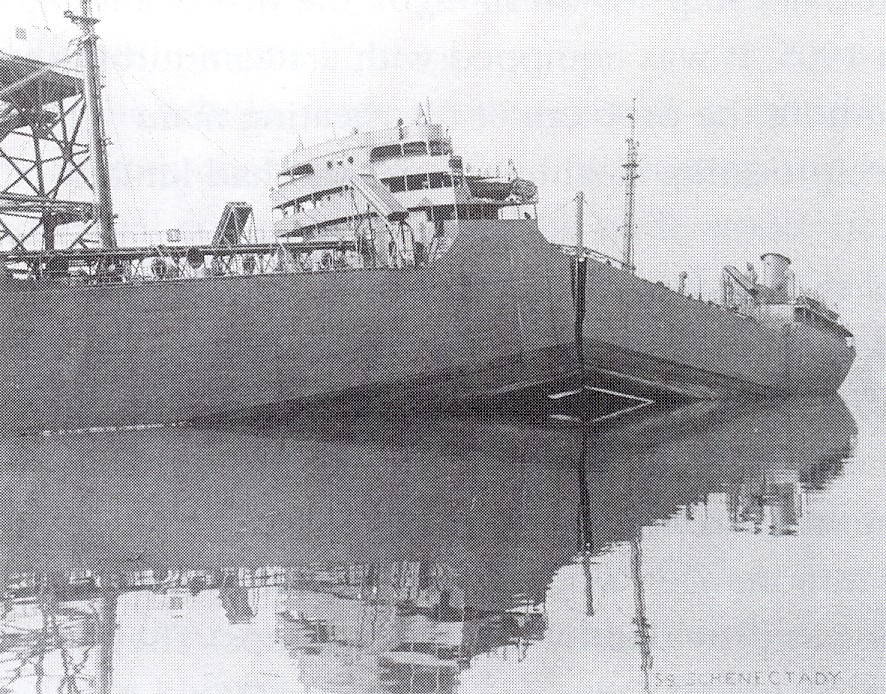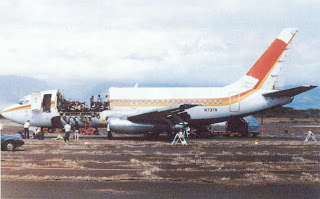Background
Research in the field of fracture mechanics barely existed prior to World War II. Cracks were thought to be small, insignificant nuisances that could never be a threat to large majestic structures like ships and aircraft. But during the war, and for a short time afterward, many ships and aircraft failed in sudden, seemingly inexplicable ways. It was eventually determined that the failures were in fact caused by cracks in their metal structures.1919 - Boston Molasses Disaster
Although many fracture related failures undoubtedly occurred prior to 1919, it is doubtful that any compared to the shear Biblical proportions of the great "Boston Molasses Disaster" which took place in downtown Boston, MA on January 15, 1919. On that day, a 50 ft tall by 90 ft diameter tank containing 2.3 million gallons of molasses burst, sending a wave of molasses flooding through the streets at 35 mph, killing 21, and injuring 150 more. Residents claimed that the area still smelled of molasses on hot summer days for decades!The failure has been the subject of engineering research now for 100 years, with studies being performed as recently as 2016. It is generally accepted that the catastrophe was caused by a fatigue crack at the base of the tank, triggered by repeated filling/emptying of it, as well as shoddy construction. This is perhaps one of the earliest fracture failures that has been extensively and repeatedly studied over decades as the field of fracture mechanics continues to mature. More information on this tragic event can be found in this Wikipedia article and this excellent YouTube video.
1940s - Liberty Ships
During World War II, many ships operating in cold northern seas experienced sudden, unexpected brittle fractures. The SS Schenectady shown here is one of the more famous cases. The Schenectady was declared ready for service on December 31, 1942. But only 16 days later, shortly after returning from sea trials and while docked at Swan Island in calm waters, the hull cracked almost in half. The cracks reached down the port and starboard sides almost to the keel. The noise was heard for over a mile.The failure, like many others, was initially attributed to poor quality welds made by inexperienced workers in the rush to build ships for the war. It was not until years later that research uncovered the true cause of the failures. While some were indeed the result of poor welds, the majority were caused by brittle fracture of low-grade steel components. The situation was made worse by the cold temperatures of war-time operating theaters that further lowered the toughness of the steels, effectively making them brittle and highly prone to catastrophic failures.
1950s - de Havilland Comet
The UK's de Havilland Comet is the aviation industry's most famous case of crack-related aircraft failure. Three fatal Comet-1 crashes over a 12 month period during 1953 and 1954 led to the grounding of the entire Comet fleet. The crashes were found to be caused by cracks growing from corners of the square fuselage windows. The square corners served as stress risers, accelerating crack formation and growth in a fuselage stressed by pressurization during high altitude flight. By the time the redesigned Comet was back in service in 1958, aviation supremacy had moved from the UK to America as the Boeing 707 and Douglas DC-8 captured the public's imagination.
1988 - Aloha Airlines Flight 243
No review would be complete without mention of Aloha Airlines Flight 243. On April 28, 1988, a Boeing 737 suffered extensive damage following an in-flight explosive decompression at 24,000 feet.The plane had only accumulated 35,496 flight hours at the time of the accident. However, it had 89,680 flight cycles (take-offs and landings) during that time, which severely cycled the fuselage due to pressurization.
The subsequent NTSB investigation determined that failure was the result of multisite fatigue cracking of the skin panel adjacent to rivet holes at a lap joint. The situation was compounded by corrosion, countersunk fastener holes forming knife edges in the skin, and finally, deficient inspection and maintenance programs on part of the operator.
Epilogue
The quandary addressed by fracture mechanics is that on the one hand, linear elastic solutions for stresses at crack tips in structures predict they should immediately fail under any(!) load, no matter how small. Of course this doesn't actually happen. On the other hand, the stress concentrations can be responsible for failures occurring at crack lengths much shorter than what would be necessary for yielding failure of the remaining uncracked portions (think of glass). It is these 'issues' that make the field of fracture mechanics so challenging, and intriguing.



